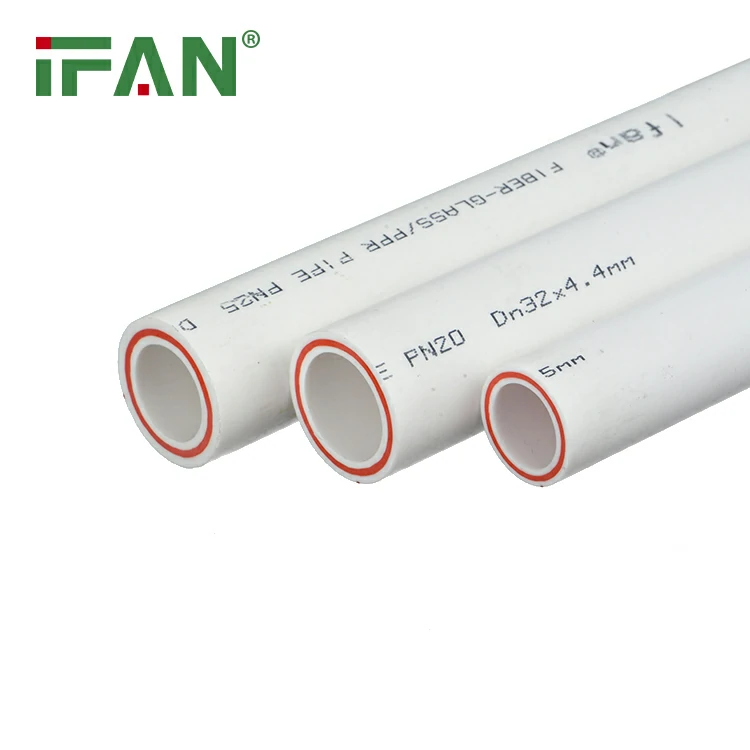Introduction to Glass Fiber PPR Pipe
Glass Fiber PPR Pipe is a composite piping material used in plumbing and HVAC systems.
It combines polypropylene with embedded glass fibers for better strength and temperature resistance.
This pipe type is known for its low thermal expansion and long service life.
However, when used in buildings, fire resistance becomes a critical concern.
This article explores whether Glass Fiber PPR Pipe meets fire safety requirements.
We will also review test standards, classifications, and best practices.
Understanding this helps ensure safe use in commercial and residential buildings.
Let’s begin by looking at the material’s natural fire behavior.
Basic Fire Behavior of PPR Material
PPR (polypropylene random copolymer) is a thermoplastic and will melt under high temperatures.
Its melting point ranges between 130°C and 140°C.
On its own, PPR is not inherently fire resistant.
In the presence of open flame, it will soften, drip, and eventually ignite.
When burning, it may release smoke and light hydrocarbons.
That makes standard PPR unsuitable for high fire-risk applications.
Glass Fiber PPR Pipe adds reinforcement but doesn’t change the polymer’s base flammability.
This means additional treatments or standards are required for fire-rated use.
Role of Glass Fiber in Fire Resistance
Glass fiber increases the mechanical strength and heat resistance of the pipe.
However, it doesn’t make Glass Fiber PPR Pipe fully fireproof.
Glass fibers themselves are non-combustible, but they are embedded in plastic.
In high temperatures, the PPR matrix still burns or melts.
That said, glass fiber can slow down deformation under heat.
It may delay collapse in moderate heat environments without direct flame.
This helps maintain pipe shape temporarily during thermal stress.
But alone, it’s not enough for true fire resistance.
Fire Classification Standards for Pipes
In many regions, pipes must meet EN 13501 or UL 94 fire classification standards.
Glass Fiber PPR Pipe typically falls under Class E in EN 13501.
Class E means the pipe will ignite but not spread flame rapidly.
For improved ratings like Class B or C, fire-retardant additives are needed.
These additives reduce flammability and smoke release.
Manufacturers may also conduct ISO 11925-2 surface flame exposure tests.
Glass Fiber PPR Pipe without additives may not meet strict fire codes.
Always ask for fire classification reports before installation in fire-rated zones.

Flame-Retardant Grades of PPR Pipes
Some manufacturers offer flame-retardant Glass Fiber PPR Pipe variants.
These use halogen-free additives or mineral fillers to resist combustion.
Such pipes can meet Class B-s1, d0 ratings for reduced flame and smoke.
They are more suitable for commercial, public, or underground installations.
Flame-retardant PPR pipes may cost more but increase safety significantly.
If fire resistance is critical, ask your supplier for the FR (fire retardant) model.
Review the datasheet for ignition time, flame propagation, and smoke density values.
Never assume a pipe is fire rated unless stated in test results.
Application Considerations and Installation Zones
The fire performance of Glass Fiber PPR Pipe depends on its installation location.
In concealed areas like wall cavities, fire-resistant barriers may be required.
In open or critical escape zones, non-combustible materials may be preferred.
Where Glass Fiber PPR Pipes must pass through fire-rated walls, use collars or wraps.
These prevent fire from spreading through pipe penetrations.
Always follow local fire codes and building safety standards.
Consult fire engineers or authorities before using plastic pipes in sensitive zones.
Proper planning ensures safe system design and code compliance.
Real-World Use Cases and Safety Practices
In residential buildings, Glass Fiber PPR Pipe is commonly used for hot water supply.
Fire risk is lower in wet systems than in dry HVAC ducts.
In hospitals or schools, fire rating becomes more important.
Projects may require pipes with specific flame spread and smoke release limits.
For example, in high-rise buildings, fire collars are mandatory at floor penetrations.
Some installations combine Glass Fiber PPR Pipes with metal sleeves for protection.
Following manufacturer guidance helps avoid fire-related failures.
Routine inspections also help maintain long-term fire safety.
Conclusion: Know Your Pipe’s Fire Limits
Glass Fiber PPR Pipe offers strength, thermal resistance, and corrosion protection.
However, it is not inherently fireproof due to its polymer base.
Glass fiber slows deformation but doesn’t stop ignition.
For fire resistance, choose certified flame-retardant versions with test backing.
Check all documentation and ask for fire rating certificates.
Install fire collars where required and follow national fire codes.
Consult professionals when using in fire-sensitive zones.
A well-informed decision helps protect lives and property in any system.

